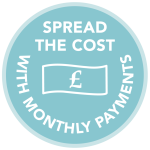Having bad credit doesn’t mean you have to miss out on catalogue shopping opportunities. Catalogues for bad credit offer a lifeline for individuals seeking to rebuild their credit scores while still enjoying the convenience of shopping on credit. However, with various payment plans available, it’s essential to choose the right one that aligns with your financial situation and goals. In this comprehensive guide, we will explore the different payment plans offered by catalogues, factors to consider when making your decision, and strategies for managing payments responsibly.
Understanding Catalogue Payment Plans
Catalogue companies typically offer different payment plans to accommodate the diverse needs of their customers. These payment plans can vary in terms of flexibility, interest rates, and repayment options. The primary goal is to provide bad credit users with the opportunity to make purchases without compromising their financial stability. Let’s take a closer look at some common catalogue payment plans.
Monthly Installments vs. Buy Now Pay Later (BNPL)
Two popular payment plans offered by catalogues are monthly installments and Buy Now Pay Later (BNPL) options. Monthly installments allow customers to spread the cost of their purchases over several months with fixed payments. On the other hand, BNPL options often provide an interest-free period where customers can delay payment for a specific time. Each plan comes with its own set of advantages and disadvantages, making it crucial to understand how they work and which one suits your financial situation best.
Monthly installments offer more predictability in terms of budgeting, as customers know exactly how much they need to pay each month until the balance is cleared. This can be beneficial for those on tight budgets as they can plan their finances accordingly. On the other hand, BNPL options can be attractive for customers who need a little extra time to gather funds for their purchase. However, it’s essential to be cautious with BNPL options as interest charges can apply after the interest-free period ends.
Impact on Credit Score
As a bad credit customer, your credit score is a vital aspect of your financial well-being. It’s important to be aware of how different payment plans can impact your credit score and what steps you can take to minimize any negative effects. Monthly installments can positively impact your credit score if you make payments on time. Consistently meeting your monthly obligations demonstrates responsible credit behavior and can contribute to gradual credit score improvement.
On the other hand, BNPL options may not have a direct impact on your credit score, as long as you adhere to the agreed-upon terms and make payments within the interest-free period. However, failing to make payments on time can lead to negative consequences, including late fees and damage to your credit score.
To ensure a positive impact on your credit score, always make timely payments on either payment plan. This will show potential lenders that you are a responsible borrower, even if you have a bad credit history.
Late Payment Consequences
Regardless of the payment plan you choose, it’s crucial to make payments on time to avoid penalties and additional fees. Late payments can lead to late payment charges, increased interest rates, and potential damage to your credit score.
If you are facing financial difficulties and are unable to make a payment on time, it’s essential to contact the catalogue company immediately. Many catalogues are willing to work with customers to find a solution, such as setting up a new payment arrangement or temporarily postponing payments until the situation improves.
Repayment Strategies for Bad Credit Customers
For bad credit customers, managing catalogue payments is a significant responsibility. It’s crucial to create a budget that takes your catalogue payments into account, ensuring that you have enough funds to cover the monthly installments or BNPL payments. Here are some strategies for effective repayment:
- Create a Budget: Start by creating a detailed budget that outlines all your income and expenses, including catalogue payments. This will give you a clear picture of your financial situation and help you plan accordingly.
- Prioritize Payments: Make your catalogue payments a priority to avoid late fees and penalties. Consider setting up automatic payments to ensure you never miss a due date.
- Avoid Unnecessary Spending: Cut back on non-essential expenses to free up more money for catalogue payments. This may require making temporary sacrifices to improve your financial situation.
- Stay within Credit Limits: If you have a credit limit on your catalogue account, be mindful not to exceed it. Overextending your credit can lead to additional fees and negatively impact your credit score.
- Use Catalogue Credit Responsibly: Only use your catalogue credit for necessary purchases, and avoid impulsive spending. Stick to items that fit within your budget and are essential for your needs.
Negotiating with Catalogue Companies
In times of financial difficulty, open communication with catalogue companies can make a difference. If you are facing challenges in meeting your payments, reach out to the catalogue company to discuss your situation. Many companies are willing to work with customers to find a solution that helps them fulfill their payment obligations.
Depending on your circumstances, the catalogue company may offer options such as temporarily reducing your payments, setting up a new payment schedule, or providing an extension for making payments. By proactively communicating with the catalogue company, you can prevent late fees and negative impacts on your credit score.
Avoiding Overwhelming Debt
While catalogue credit offers convenience, it’s essential to use it responsibly to avoid overwhelming debt. As a bad credit customer, taking on too much debt can worsen your financial situation and make it challenging to meet your payment obligations. Here are some tips for avoiding overwhelming debt with catalogue credit:
- Borrow Within Your Means: Only use your catalogue credit for purchases that you can comfortably afford to pay back. Avoid making impulse purchases or buying items that are beyond your budget.
- Monitor Your Credit Limit: Keep track of your credit limit to avoid maxing out your catalogue account. Staying well below your credit limit will leave room for emergencies and unexpected expenses.
- Pay More than the Minimum: If possible, pay more than the minimum amount due each month. This will help you pay off your balance faster and reduce the amount of interest you pay over time.
- Consolidate Debt if Needed: If you have multiple catalogue accounts or other debts, consider consolidating them into a single payment plan. This can make it easier to manage your debt and potentially reduce the overall interest you pay.
- Seek Professional Financial Advice: If you’re struggling to manage your catalogue debt and other financial obligations, consider seeking advice from a financial counselor or advisor. They can provide personalized guidance and help you create a plan to get back on track.
Seeking Professional Financial Advice
For individuals struggling with bad credit and catalogue payments, seeking professional financial advice can be beneficial. Financial advisors can provide personalized guidance based on your unique financial situation and goals. They can help you create a budget, manage your debt, and develop a plan to improve your credit score over time.
Additionally, debt counseling services are available to assist individuals in managing their debt effectively. Debt counselors can work with catalogue companies on your behalf to negotiate payment arrangements and potentially reduce interest rates or fees.
By taking advantage of these resources, you can gain valuable insights into your financial situation and receive expert advice on making informed financial decisions.
Case Studies or Testimonials
Real-life examples of bad credit customers and their experiences with different payment plans can provide valuable insights. Here are some testimonials and case studies that illustrate how choosing the right payment plan can impact credit health positively.
Testimonial 1: Mary’s Success Story
Mary, a bad credit customer, struggled to manage her finances and make timely payments on her catalogue account. She often opted for the BNPL option, thinking it would give her more time to gather funds for her purchases. However, she realized that the interest-free period was short-lived, and she ended up facing high-interest charges after the grace period ended.
After seeking financial advice, Mary switched to monthly installments. She created a budget, prioritized her catalogue payments, and made efforts to pay more than the minimum amount due each month. As a result, her credit score gradually improved, and she was able to access better credit opportunities in the future.
Testimonial 2: John’s Journey to Financial Stability
John, another bad credit customer, was overwhelmed with debt and struggled to manage his catalogue payments. He contacted his catalogue company and worked with a debt counselor to negotiate new payment terms. The company agreed to lower his interest rate temporarily and provided an extended payment schedule.
With the guidance of the debt counselor, John created a debt management plan and committed to responsible spending. He avoided taking on additional debt and focused on paying off his catalogue balance. Over time, John successfully improved his credit score and regained financial stability.
Conclusion
Choosing the right payment plan from catalogues for bad credit is a crucial step in building a stronger financial future. By understanding the various payment options, evaluating key factors, and practicing responsible credit management, you can make the most of catalogue credit while improving your credit health. Remember, responsible payment practices and open communication with catalogue companies can lead to a successful credit experience, even for those with bad credit. With careful planning and proactive financial management, catalogue credit can become a valuable tool in your journey towards financial stability.





